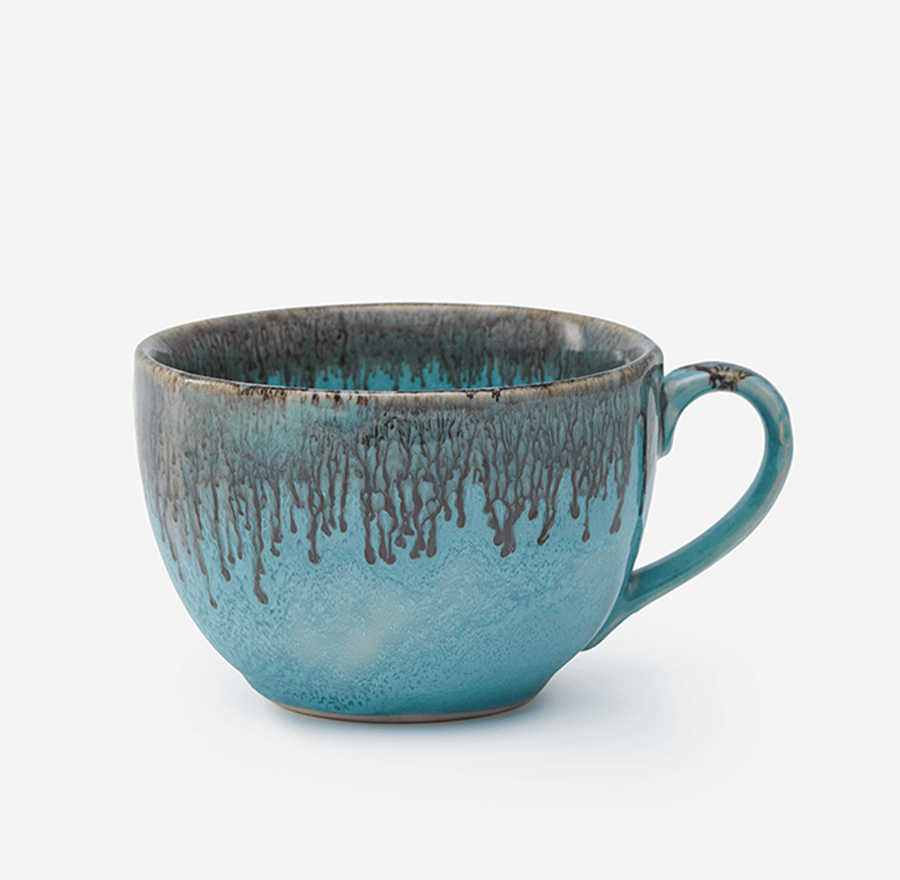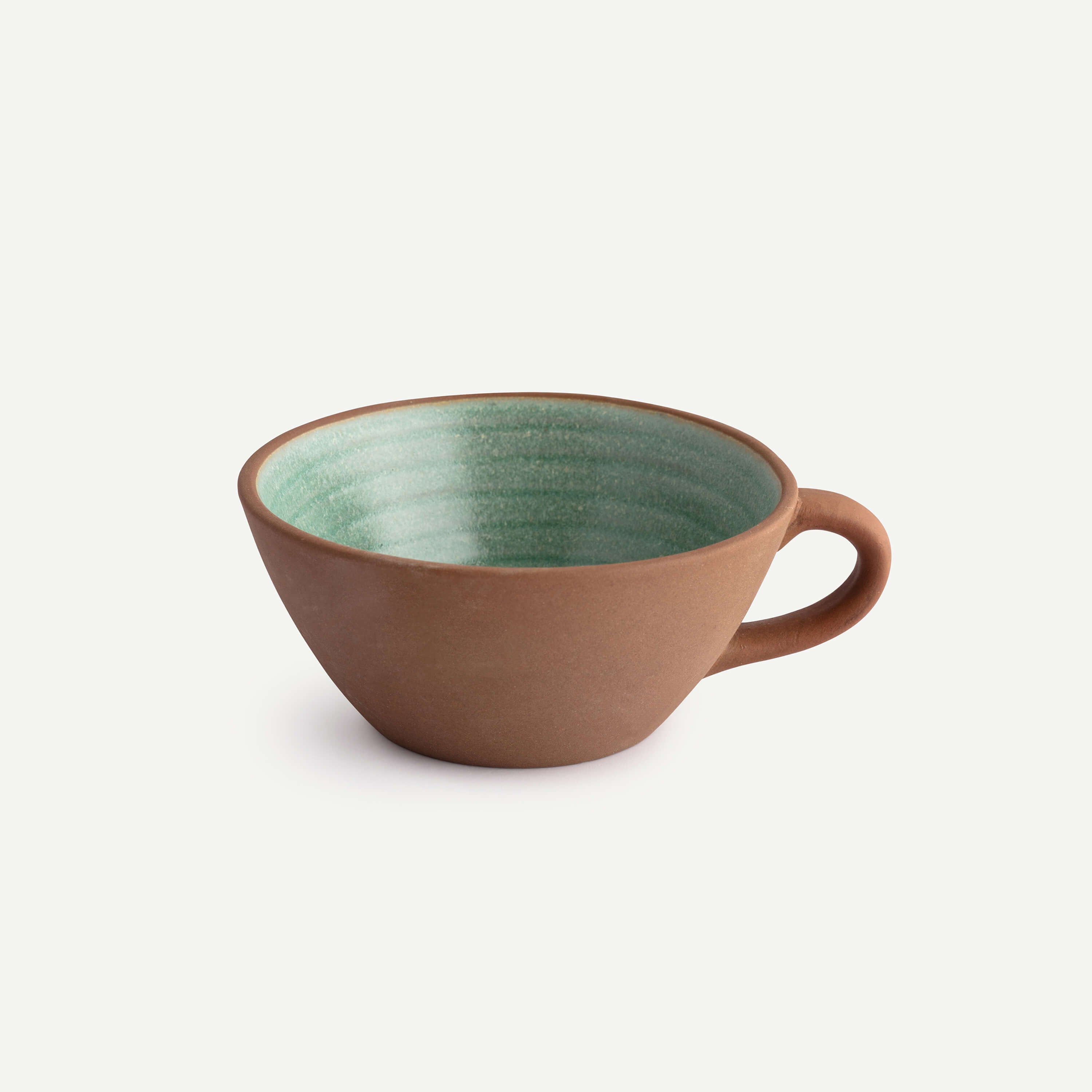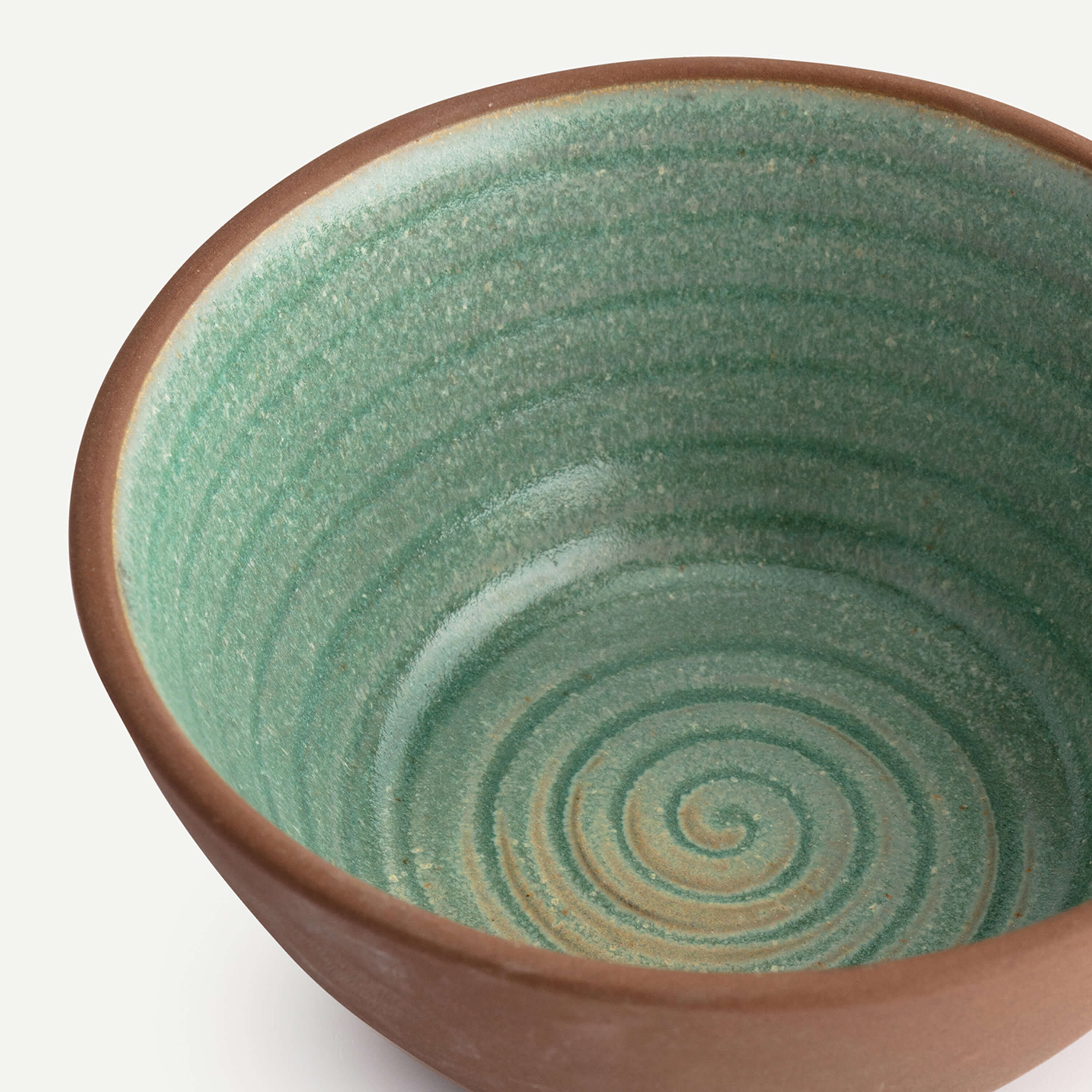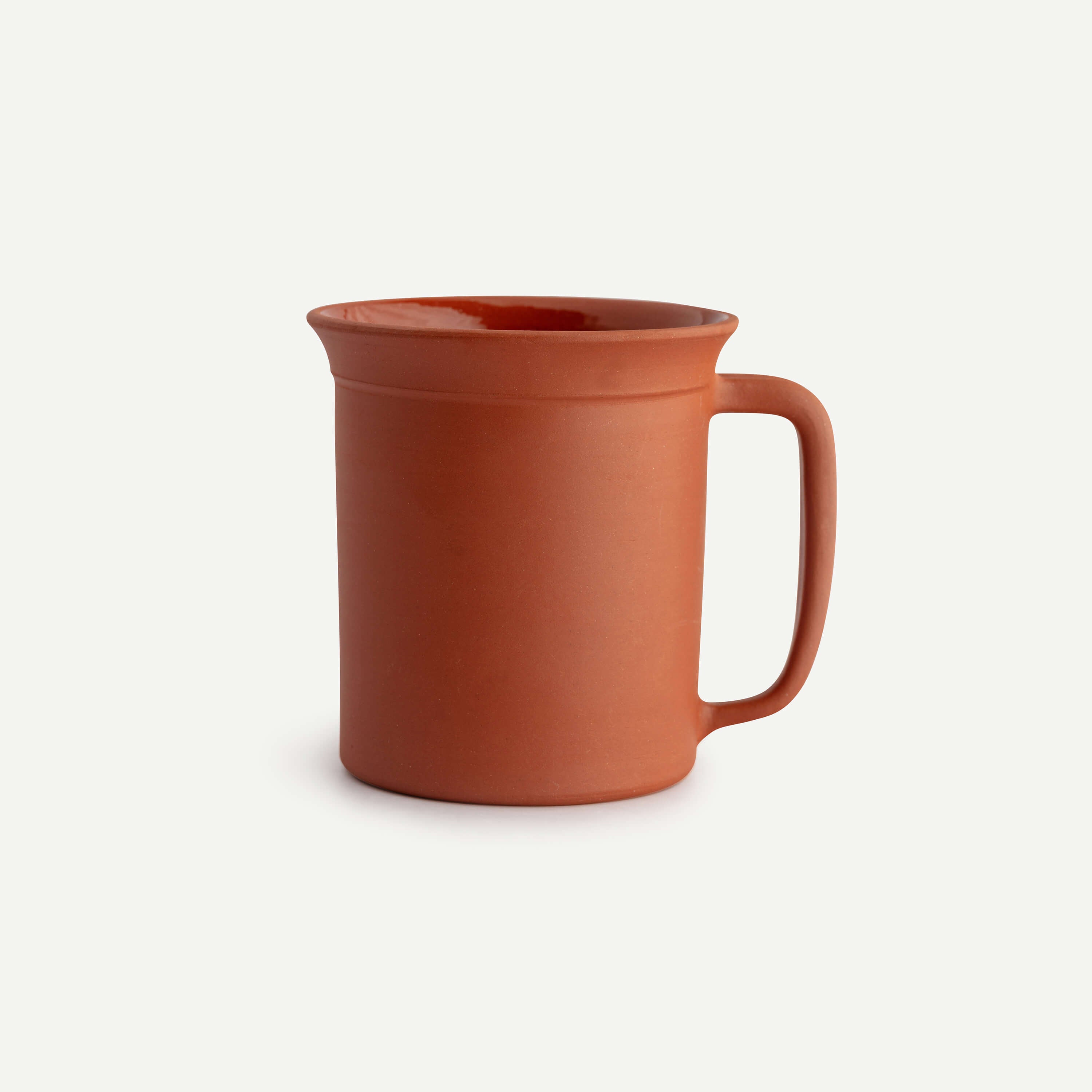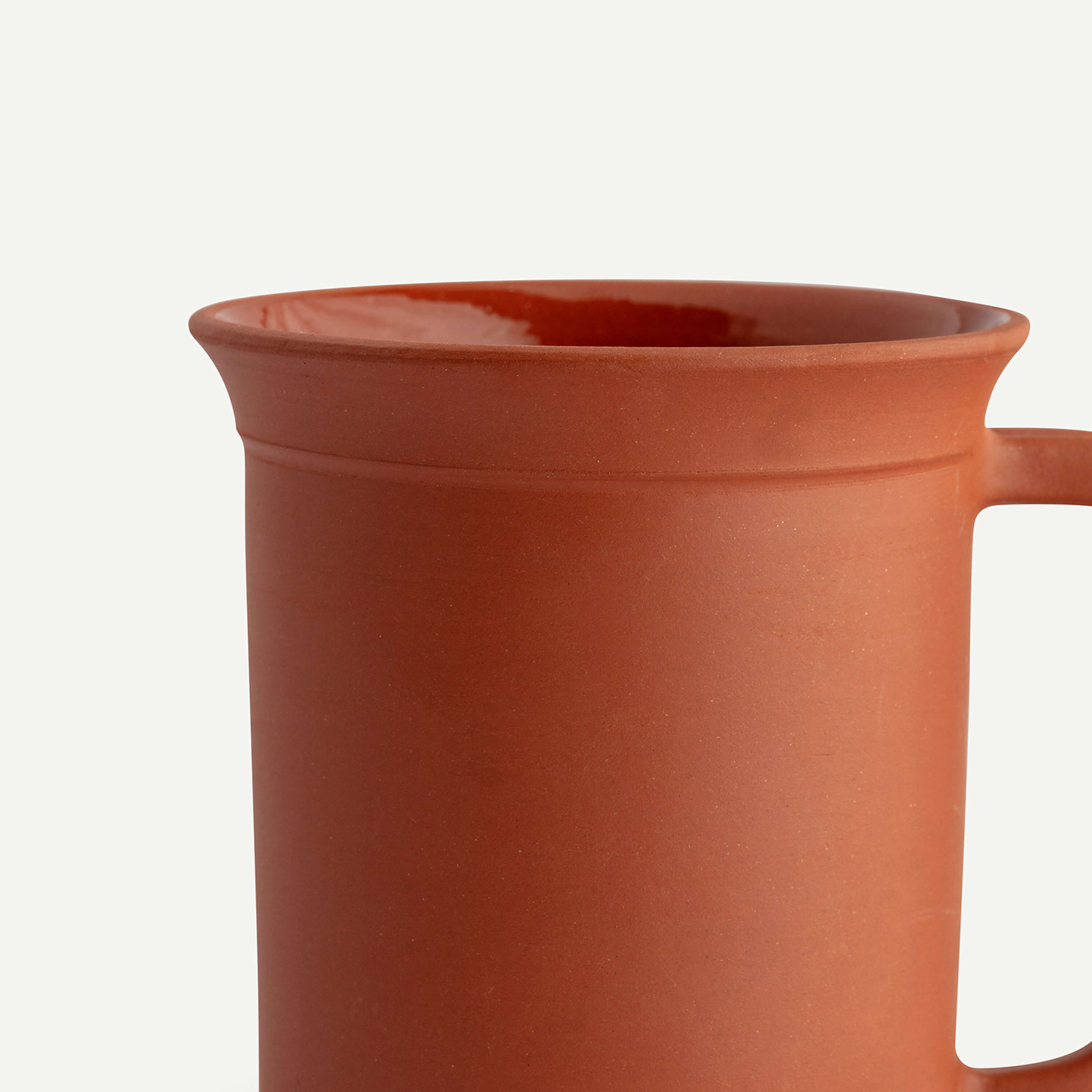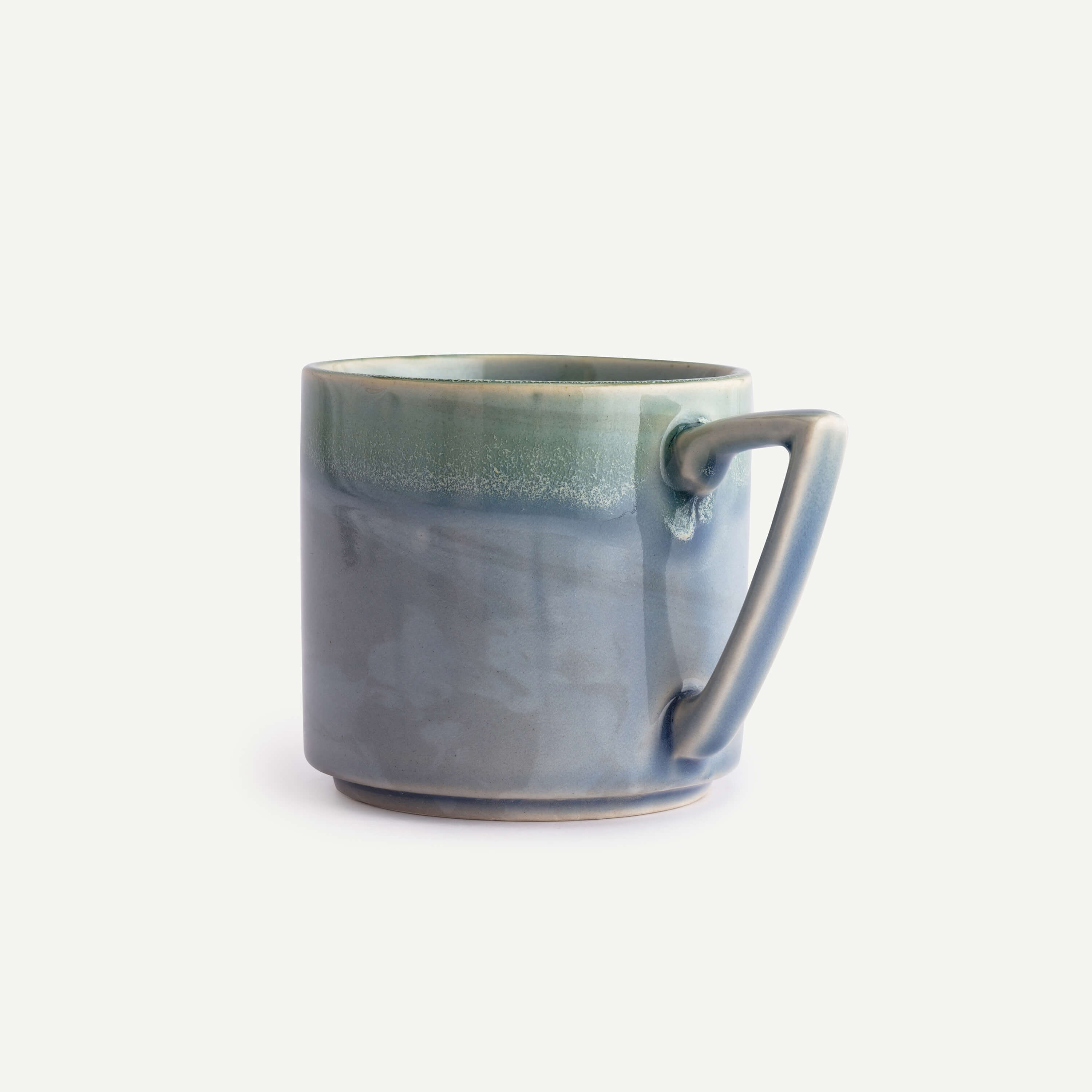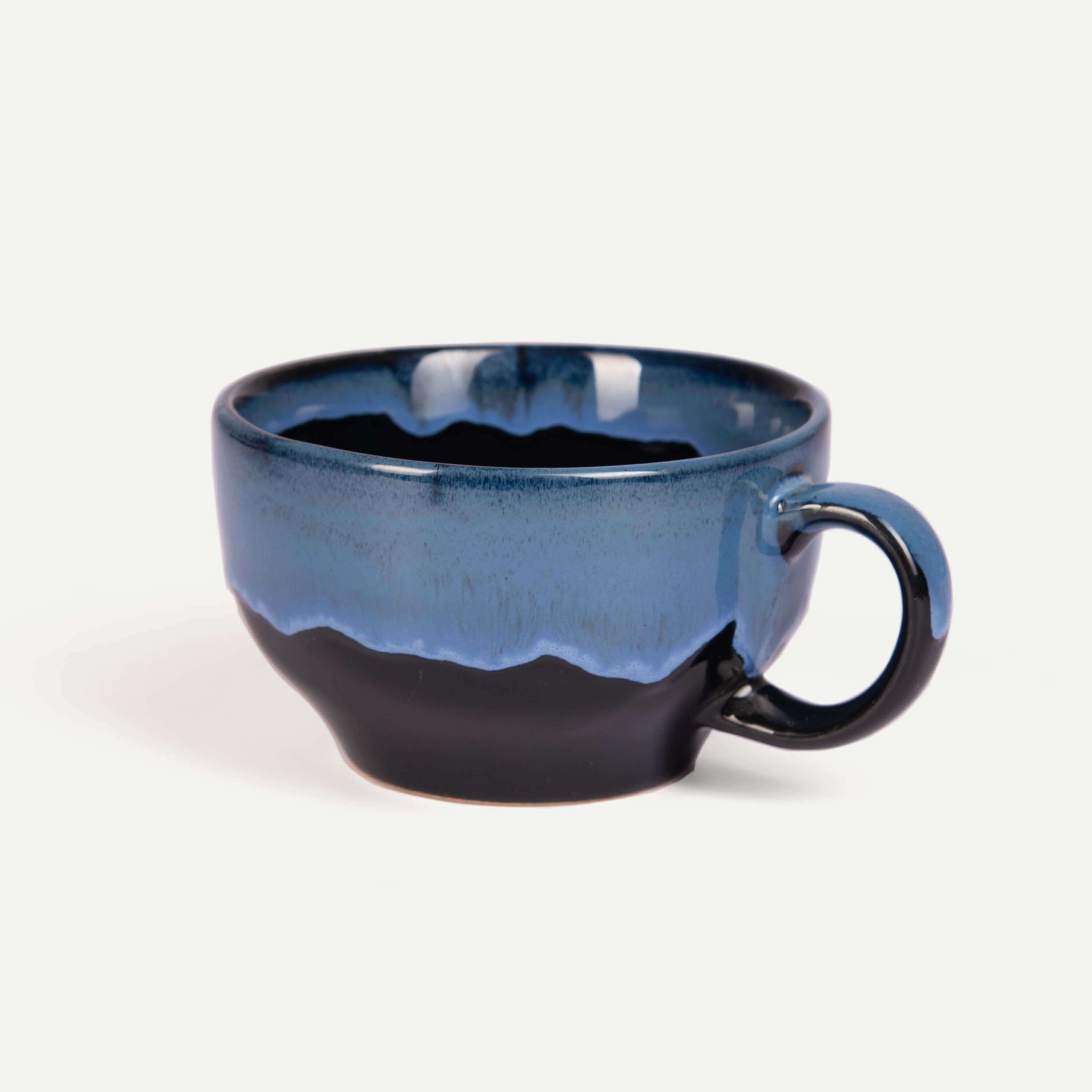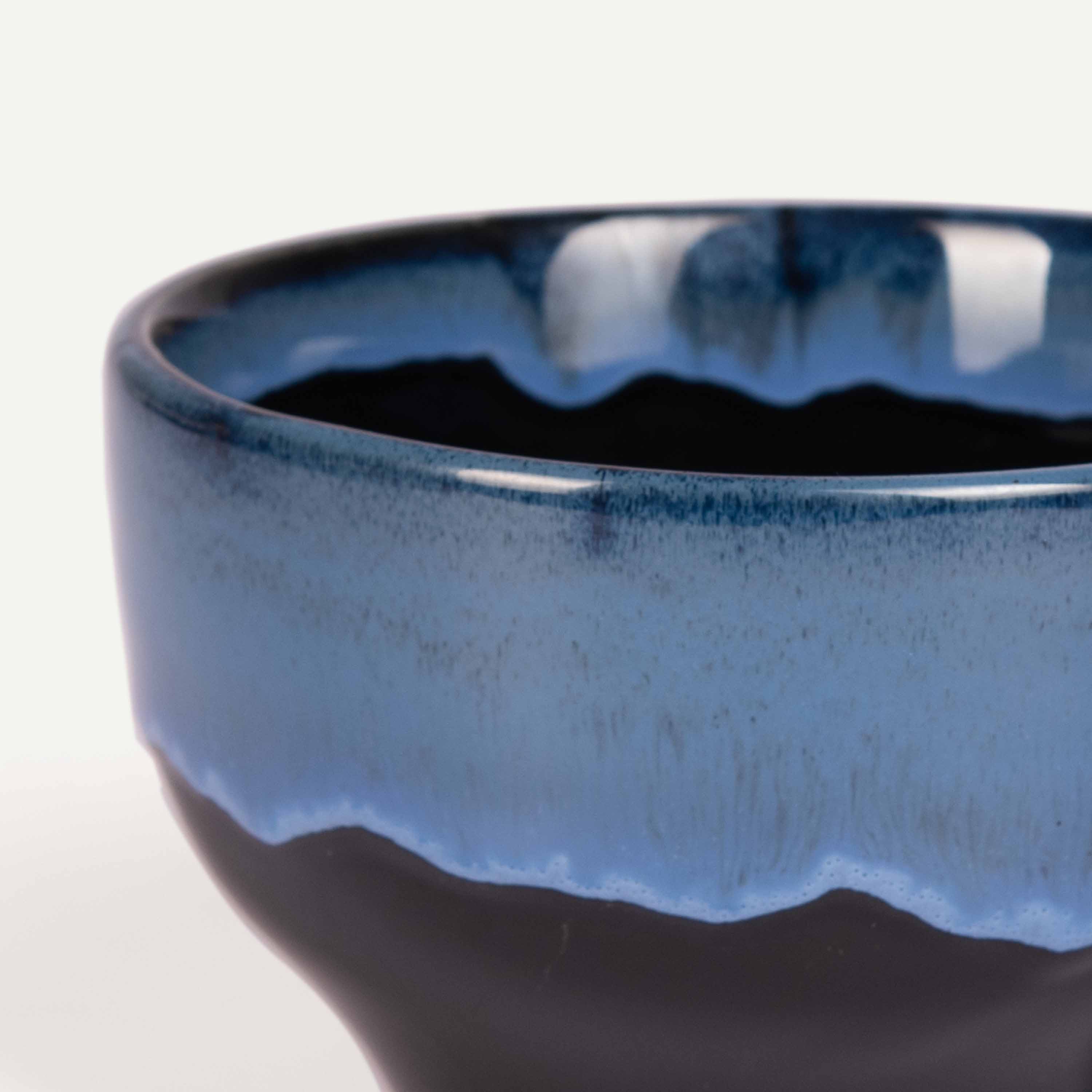KHAKI MUG
Stay sharp through the day with this edgy ceramic mug.
Stay sharp through the day with this edgy ceramic mug.
Craft Type: Ceramics
A handcrafted cup with sharp corners and clean lines — use it for coffee, tea or any other beverage. The glaze is differently coloured on the inside and outside, which only makes it cooler. Pair it with the Dove Mug to make a set of similarly angled mugs.
This product is handcrafted and slight variations in colours, textures and forms are to be expected.
Made in: Uttar Pradesh
Material: Stoneware
Dimensions (cm): 9.1(L) x 9.1(B) x 8.6(H), Dia: 9.1
Dimensions (inches): 3.6(L) x 3.6(B) x 3.4(H), Dia: 3.6
Capacity: 320 ml
Weight: 290 grams
No. of pieces in a set: 1, One Mug
Stoneware is made from clay and fired at high temperatures in a kiln to harden. Characteristically, stoneware is less porous and more durable than earthenware.
Much like other clay products, stoneware is also made by kneading the clay and then throwing it onto a pottery wheel. The shaped clay product then goes through the process of bisque firing, glaze application, drying, and glaze firing to make the final product.
Pottery in the Indian subcontinent has a long history — it has existed as a craft form for centuries. Ikai Asai’s collection of stoneware is developed in collaboration with small-scale units — bringing together the best of industrial technology and craft.
- Wash by hand only, using a mild dishwashing soap. Dry using a soft towel or tissue. Avoid stacking ceramic dishes in the sink.
- This ceramic product is microwave-safe.
- Description
- Process & Craft
- Care
Craft Type: Ceramics
A handcrafted cup with sharp corners and clean lines — use it for coffee, tea or any other beverage. The glaze is differently coloured on the inside and outside, which only makes it cooler. Pair it with the Dove Mug to make a set of similarly angled mugs.
This product is handcrafted and slight variations in colours, textures and forms are to be expected.
Made in: Uttar Pradesh
Material: Stoneware
Dimensions (cm): 9.1(L) x 9.1(B) x 8.6(H), Dia: 9.1
Dimensions (inches): 3.6(L) x 3.6(B) x 3.4(H), Dia: 3.6
Capacity: 320 ml
Weight: 290 grams
No. of pieces in a set: 1, One Mug
Stoneware is made from clay and fired at high temperatures in a kiln to harden. Characteristically, stoneware is less porous and more durable than earthenware.
Much like other clay products, stoneware is also made by kneading the clay and then throwing it onto a pottery wheel. The shaped clay product then goes through the process of bisque firing, glaze application, drying, and glaze firing to make the final product.
Pottery in the Indian subcontinent has a long history — it has existed as a craft form for centuries. Ikai Asai’s collection of stoneware is developed in collaboration with small-scale units — bringing together the best of industrial technology and craft.
- Wash by hand only, using a mild dishwashing soap. Dry using a soft towel or tissue. Avoid stacking ceramic dishes in the sink.
- This ceramic product is microwave-safe.
Manufactured at: Crossing Moonda Khera,G.T. Road,Khurja-203131












